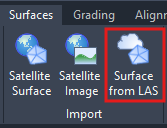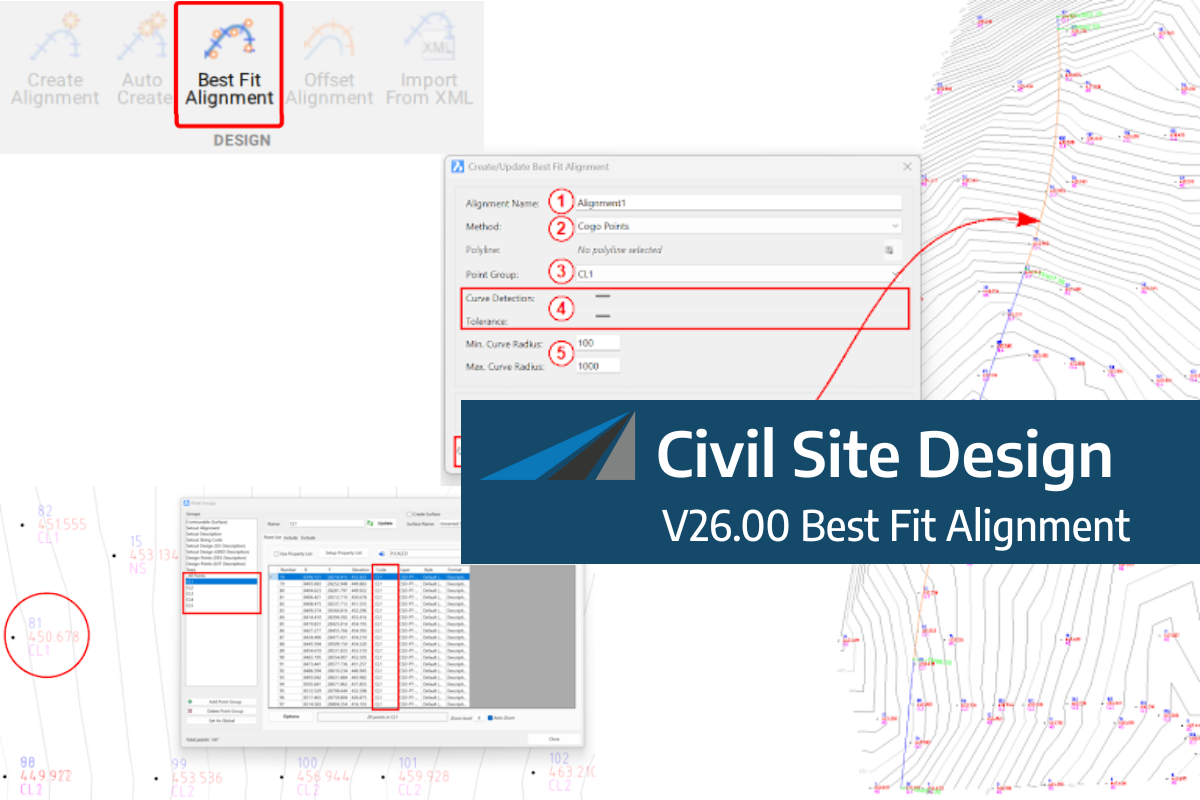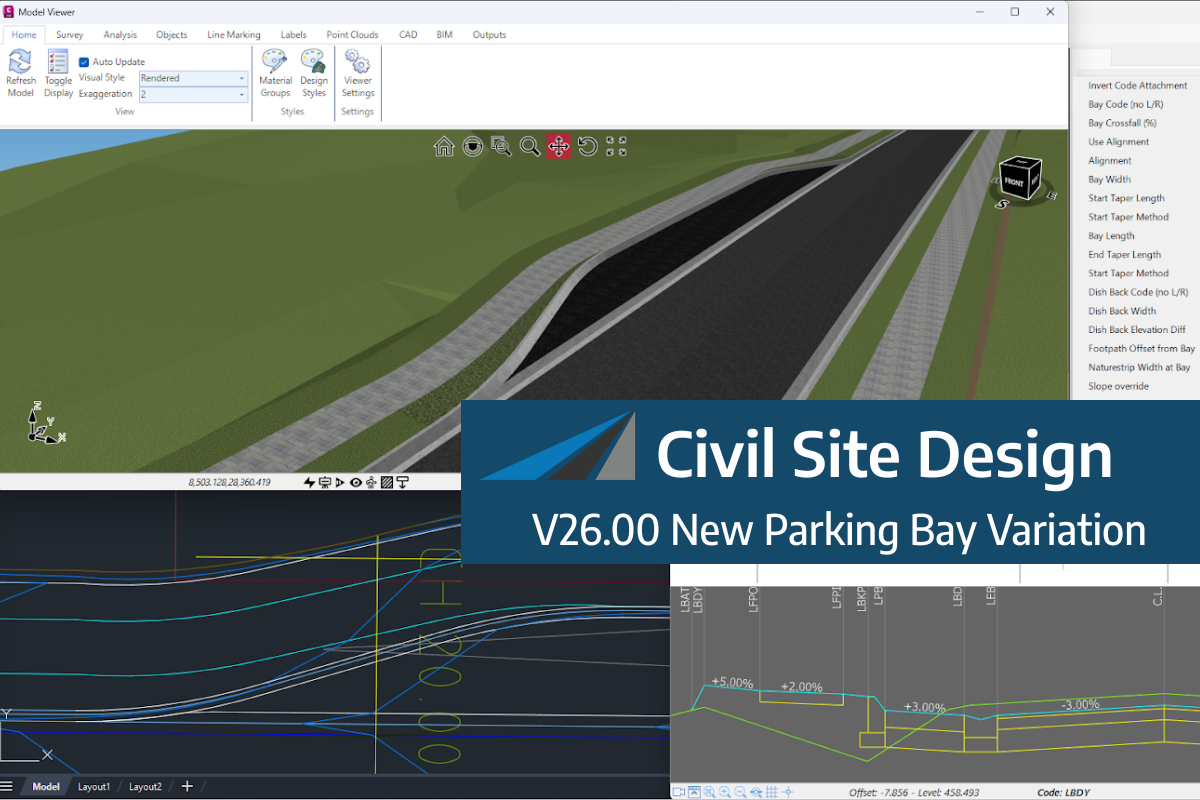One of the exciting new features in the Civil Site Design V26 and Stringer Topo V26 release is the Surface from LAS command. Often LiDAR and point cloud data is saved as a LAS file, which previously required interpreting in another software prior to being imported to create a surface. This new command allows you to create a CSD surface directly from a LAS file without the need for any other programs. We foresee that this command will be used predominantly by AutoCAD and BricsCAD users, however it is also available to Civil 3D users.
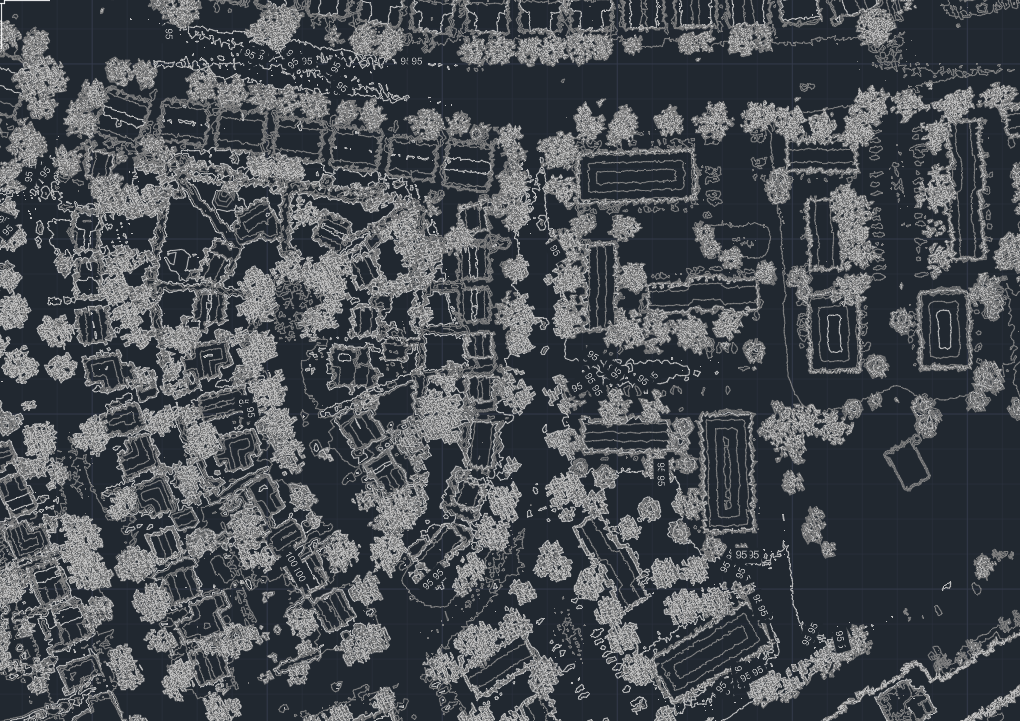
Image: A Civil Site Design surface created from LiDAR data using the new Surface from LAS command
The Surface from LAS command is available in the Surfaces tab of the Ribbon and in the CSD Toolspace by right clicking on Surfaces. When you run the command, you will first be prompted to locate the LAS file you wish to import.
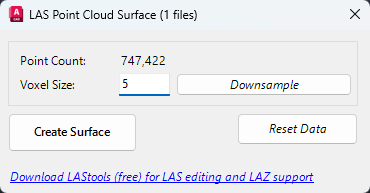
Image: Surface from LAS form
Next you have the option to downsample the data intelligently using voxel downsampling. This can reduce the total number of points being imported while maintaining a good representation of the original data and reducing the time and processing required to create and display the surface. The smaller the voxel size applied, the more points will remain.
Click Create Surface and give the new surface a name to create your Surface from LAS. If you receive an updated LAS file, you can repeat the import process and choose to update the LAS surface rather than create a new one.

Adaptive Decimate | Managing Large Surfaces
If you choose not to downsample when importing your LAS surface, the CSA surface engine may apply Adaptive Decimation. Very large input data files can exceed hardware limitations when processing the surface triangulation. Adaptive Decimate addresses this problem by detecting when the number of points could result in software instability and filters out points before creating the TIN surface.
To do this, Adaptive Decimate divides the surface into rectangular cells and assesses the elevation variation within the cell. If the elevation changes are small, this means the cell is relatively flat and the overall shape of the cell can be maintained with just four points in the outer corners. If the elevation variation is high, the cell is divided and checked again. The result is that the overall shape and accuracy of the surface is maintained whilst reducing the volume of data, to create an optimised surface with improved system performance.
A new feature of Civil Site Design V26 is the Best Fit Alignment command. This command is available to AutoCAD and BricsCAD users and allows you to create an alignment based on Cogo Point or polyline data. When the command is run, the Best Fit algorithm analyses the Cogo Points in the specified Point […]
An exciting new tool in Civil Site Design/Corridor EZ v26 is the Vertical Grading Optimizer which can create vertical design profiles based on the parameters you set. Previously, the vertical best fit design profile was based on matching closely to the terrain (within preset cut/fill depths) and adding vertical curves. Mostly, you would remove these […]
We know parking bays come in all shapes and sizes, and that many of them deserve an independently designed string (with cross sections attached to the string to describe the kerb shape of the parking bay). For those parking/bus or widening bays that can be readily described with cross section edits, we’ve got you covered […]
Non-linear design is when a typical, cross section-based design does not generate the intended result. Typically for designs that are non-parallel, such as driveways, car parks, commercial / Industrial, residential & retaining wall projects. In this webinar, our expert, Jonathan Taylor will show you how to use the Civil Site Design tools to tackle these […]

